Asheville sidewalks: How many Vermont Avenue trees face removal? Other sidewalk projects?
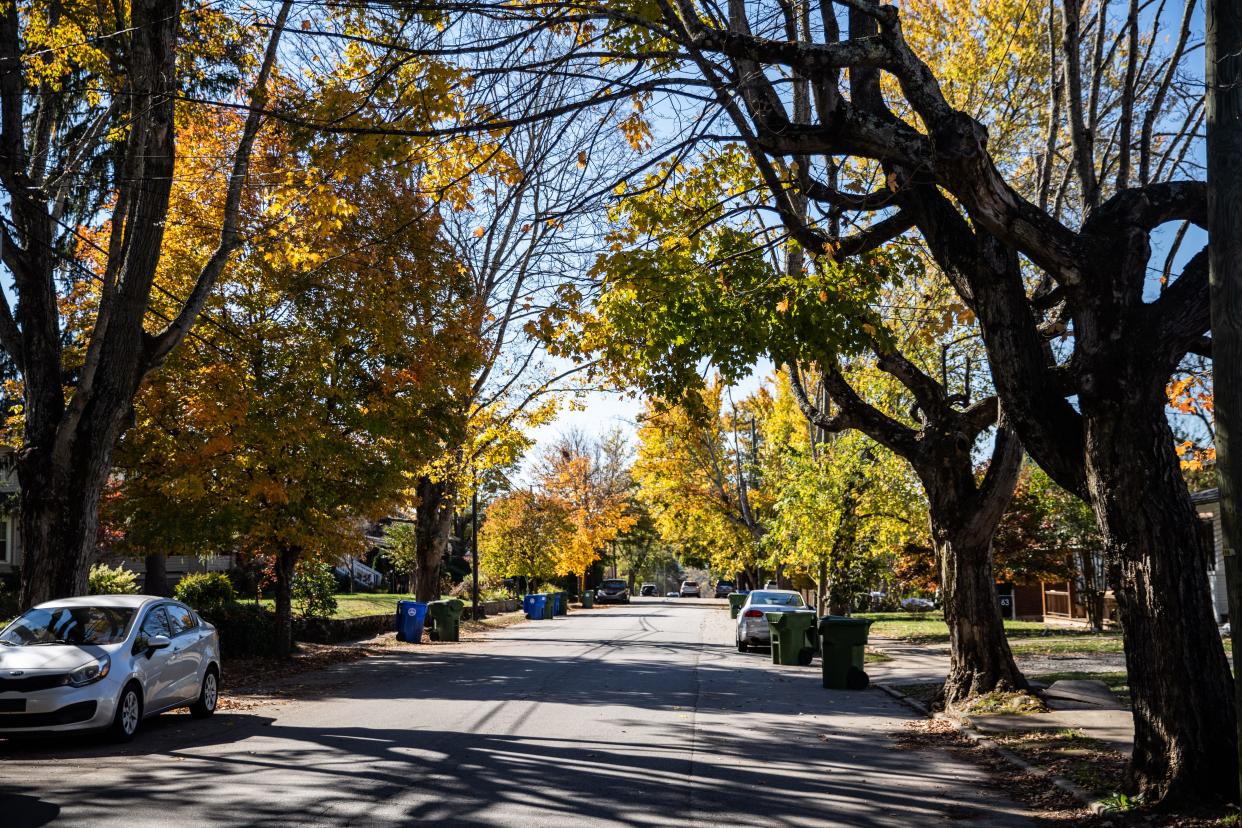
ASHEVILLE - With sidewalk replacement slated for a popular West Asheville street following public engagement earlier this year, the city will move forward with a design officials say allows for the preservation of as many of the corridor's signature maple trees as possible.
However, some tree loss is inevitable.
Preliminary plans estimate the removal of 12 trees, but design work is currently underway and there could be more or less impact depending on its findings, said Jade Dundas, capital projects director with the city.
The initial project proposal, which was presented to the city's Urban Forestry Commission Nov. 2, included plans to cut down dozens of trees.
Previous coverage:
Vermont Avenue tree removal, sidewalk project: Asheville asks for public input
Dozens of maple trees set for removal for West Asheville sidewalk project
The project concerns about 1,200 feet of sidewalk on Vermont Avenue between Haywood Road and just south of Olney Road. It's a corridor loved by many of its residents, one defined by the old, massive maples that arch over the street.
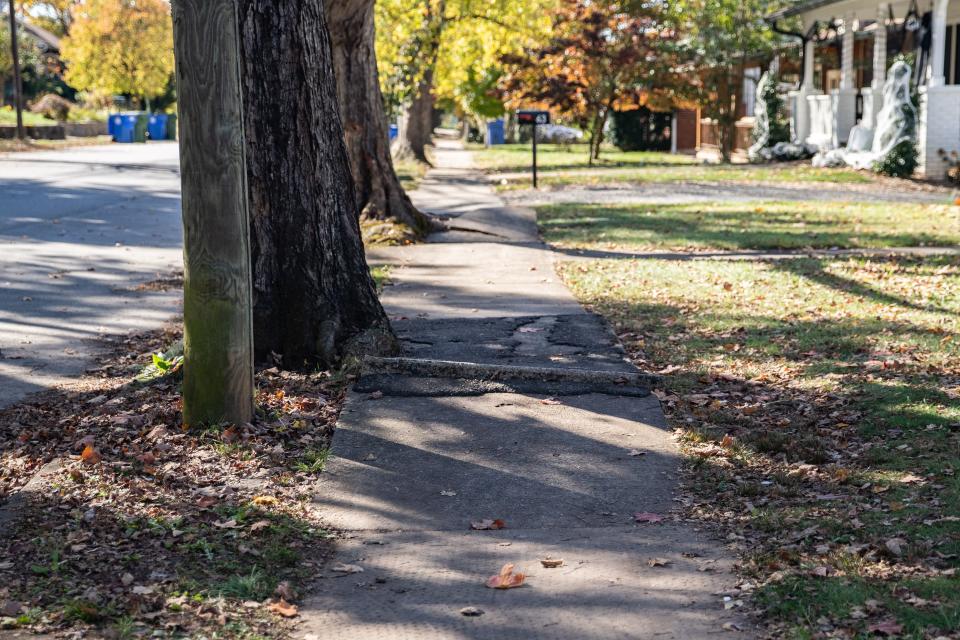
But root systems disrupt the sidewalk, pointed out Pepi Acebo, who owns a home nearby, with growth pushing up and across the pavement.
He recognizes that it's not ADA compliant — which is a central focus of the sidewalk replacement — and said he understands a need to make sidewalks accessible, and hopes the project is balanced with the preservation of the healthy trees.
"We have a fantastic urban forestry crew in the city of Asheville that is trying to do the best things that they can for the neighborhood," Acebo said. "And we just want to see the character of that tree-lined boulevard preserved."
The city does not currently have an urban forester — though it's a position the Urban Forestry Commission has been pushing the city to hire for years — but it does have an arborist and a public works crew.
According to the project page, the city has been taking a collaborative approach between its consultant engineering team, the arborist and the Urban Forestry Commission to balance the the pressing needs for infrastructure improvements and protection of the city's tree canopy.
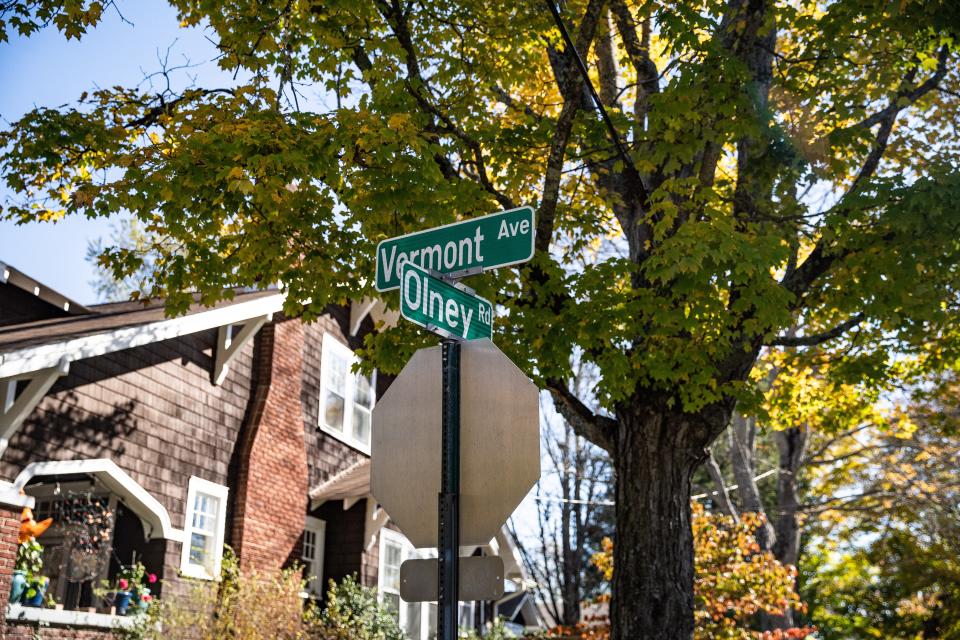
For some residents, like Meredith Andrews, news of the project was met with concern that the neighborhood would lose a vital piece of itself. Her great grandparents lived on Olney Road, and during Andrews' childhood, her grandmother lived in a bluish-gray house on Vermont Avenue, where she moved in the 1970s.
'Stand up and fight back': Abortion rights protest spills across downtown Asheville
Andrews spent much of her adolescence in the neighborhood, and even when she and her mom moved to Malvern Hills, her mom would put her on the back of her bike and ride to her grandmother's house, a journey defined by the bower of trees.
"Those trees, it feels like a tunnel when you're going through them," she said. “Over time, when you see the infill in the city, it’s hard. It’s hard to see what once was be so different now."
Though still concerned, she said she understands the need for improvements, and just hopes that city will replant and save what it can.
In a January survey of area residents, 88% of the 276 respondents chose the option with the least tree impact — which would replace the existing sidewalk on both sides with a 4-foot sidewalk, keeping a grass strip between the existing curb and new sidewalk while preserving some existing street trees and replanting new trees in grass buffer strips.
Other sidewalk coverage:
$2.8 million sidewalk project 'best thing' coming to West Asheville
$3 million sidewalk proposed in Asheville; 'significant step forward' for community
On-street parking is preserved, as is the existing street character, the survey says, as this option, one of three offered, preserves the most amount of existing tree canopy.
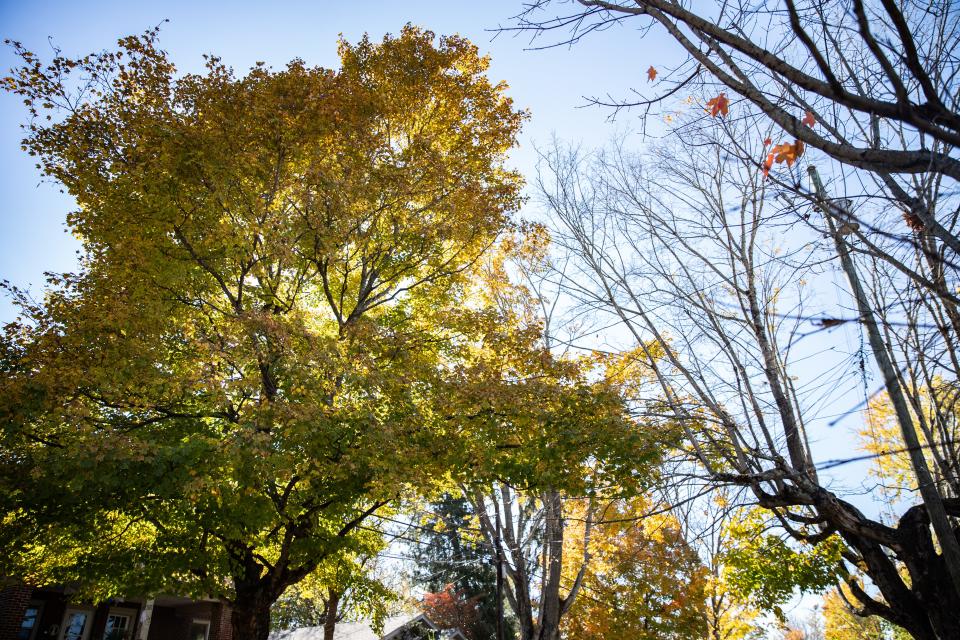
Under this option, 12 trees would be removed and 26 planted, resulting in a total of 43, it says, noting trees that pose a risk due to their declining health would be removed, as would any trees where a 4-foot sidewalk width would be unavailable.
Dundas said he understands why sidewalk projects garner so much public interest, and said the city has been very aware of concerns surrounding tree canopy preservation, and felt as though they developed options to help minimize the impact.
"They are in people’s front yards, literally," Dundas said of sidewalks. “We put the work in to make sure we understood what was desired and that we were able to meet those expectations."
Dundas said before design plans are finalized, there will be another round of public engagement, and the city will communicate exactly which trees will be impacted.
Ed Macie, a member of the city's Urban Forestry Commission, which reviewed the city's plans and will collaborate on the effort, according to the city website, said he "gives the city credit" for their work on the sidewalk replacement.
More: Asheville commissions like forestry, affordable housing, fear loss in city restructure
"It's a really difficult situation, and they are doing due diligence, trying to work with as many trees as they can, but it's a no-win situation," he said.
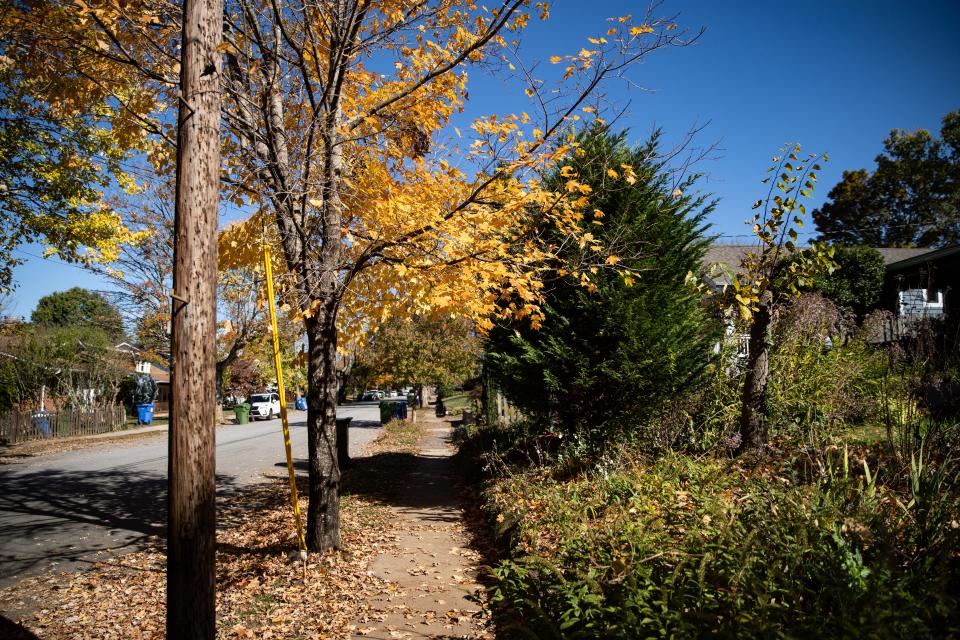
Related reporting: Asheville downtown trees survived nearly a century, now may be felled for housing
He feels the city has looked at as many solutions as it can — efforts complicated by limited root space, a narrow gap between sidewalk and curb and conflicts with overhead powerlines.
A tree condition assessment of the area's 33 trees shows varying levels of canopy and structure condition among the various varieties of maple trees.
Four were listed in "poor" canopy condition and 14 with "poor" structure condition, with a number of issues listed including fungus, bacteria and insect damage.
A brittle species, Macie said some of the silver maple trees are decaying and could present risks, like falling branches.
More: Asheville open space amendments, South Slope Vision Plan get OK from council committee
"I typically don’t say this, but this is one of those cases where we have to think about trees as a renewable resource, and I understand that they are timing out at the end of their life cycle, which it’s pretty remarkable for urban trees to live 100 years by anybody’s standards," Macie said.
“I hope they come back with trees that can create a similar canopy over the street, that create that cathedral-neighborhood feel we get on Vermont Avenue, because it’s not common in cities anymore.”
More: Blue Ridge Parkway trails reopen following wildfire containment near Pisgah Inn
What's the status of the city's other bond-funded sidewalk projects?
The Vermont Avenue project is among the city's bond-funded sidewalk projects, prioritized as part of the 2016 bond initiative. While the bulk of funding for most projects comes from the bond, a combination of funding sources have been used to supplement the cost — such as Metropolitan Planning Organization funding.
From design to construction, the Vermont Avenue project carries an estimated $1.15 million price tag, with $48,832 budgeted for its design contract, said Dundas.
Dundas presented more sidewalk updates at an April 26 Asheville City Council budget work session:
Shiloh area improvements:
Limits of construction: Shiloh Road to midblock Hampton Street, connection to Shiloh Community Garden.
Benefits: Meets community transportation plan, neighborhood connectivity, new sidewalk.
Challenges: Limited space on Brooklyn Road between center and road.
Construction award: spring 2023.
Estimated cost: $592,000.
More: Asheville's little corner of agriculture paradise brings communities together
New Haw Creek Road:
Limits of construction: Beverly Road to Bell Road.
Benefits: Improved pedestrian access, neighborhood connectivity.
Challenges: Property acquisition, limited right-of-way, slopes on both sides of the road.
Construction award: fall 2022.
Estimated cost: $3.3 million.
Johnston Boulevard:
Limits of construction: Patton Avenue to Iona Circle.
Benefits: Neighborhood connectivity, accessibility.
Challenges: Limited right-of-way, railroad crossing.
Construction award: fall 2022.
Estimated cost: $3.3 million.
Airport Road
Limits of construction: Walmart to Hendersonville Road.
Benefits: Connection of commercial centers, completion of sidewalk connection I-26 to Hendersonville Road, signal improvements.
Challenges: Department of Transportation roadway, night work required.
Construction award: spring 2023.
Estimated cost: $2.7 million.
Onteora Boulevard
Limits of construction: Lincoln Avenue to Raleigh Road.
Benefits: Increased connectivity to education, commercial and recreation facilities.
Challenges: Construction in tight right-of-way.
Construction award: fall 2022.
Estimated cost: $1.2 million.
Sarah Honosky is the city government reporter for the Asheville Citizen Times, part of the USA TODAY Network. News Tips? Email shonosky@citizentimes.com or message on Twitter at @slhonosky.
This article originally appeared on Asheville Citizen Times: Vermont Avenue tree removal sidewalk project moves to design phase

